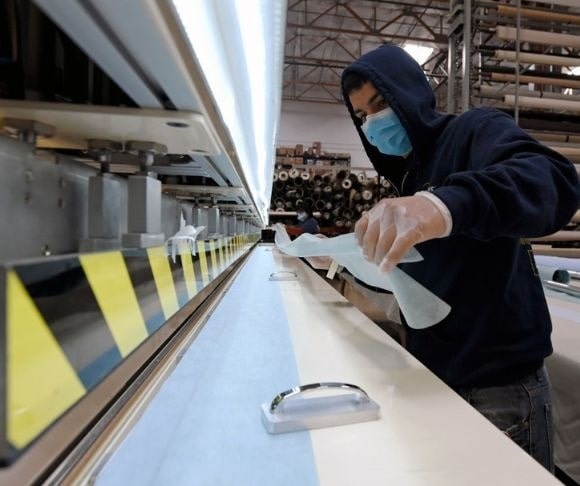By the time your grandchildren are of working age, they will probably be clocking in five hours a day and still earning a good living. Economists have predicted for decades that the workweek would eventually dwindle to a dozen hours or so, citing technological progress as a means to enjoy more leisure time. But politicians, unsatisfied by the tremendous declines in hours and improvements in workplace conditions in the industrial age thanks to the free market, are proposing to legislate how many hours you do every day. One official from Washington State is the latest interventionist to try to socially engineer the modern workweek and mandate hours in the economy.
Legislation
State Senator Joe Nguyen is proposing to implement a 32-hour workweek in The Evergreen State. Under his bill, employees would complete four eight-hour days, and any additional time exceeding 32-hour threshold would be paid time-and-a-half. This measure would exempt truckers, bus drivers, farmers, and other comparable blue-collar professionals.
 The purpose of the legislation is to take another look at how we grapple with the workweek in the modern economy. Nguyen conceded that his concept would not be appropriate for all industries, but he says it is necessary to initiate a conversation about society recognizing the future of work.
The purpose of the legislation is to take another look at how we grapple with the workweek in the modern economy. Nguyen conceded that his concept would not be appropriate for all industries, but he says it is necessary to initiate a conversation about society recognizing the future of work.
Nguyen wants to prioritize his proposal for the larger corporations and eventually address some of the consequences that would arise with his law. One of the potential ramifications is that businesses would choose to pay employees the same wages for four days of work without requiring them to show up to the office on a Friday, which would reduce weekly payouts.
An interesting part of his announcement is that he alluded to private sector companies worldwide that have experimented with different approaches to the workweek, including Microsoft. The tech titan implemented a four-day schedule in Japan with its 2,300 employees and reported a 40% spike in employee productivity in a single year. Other businesses and billionaires have mulled over the shorter workweek, including Mexican billionaire Carlos Slim who recommended workweeks that are fewer than 30 hours, but the trade-off is working until you are 75.
The difference? Microsoft, for instance, is a private business that tested out a new type of workweek without state intrusion. Nguyen’s idea chooses to bypass the free-enterprise system and go straight to the mandates.
Siesta
France and Spain have ostensibly become the symbols of the 35-hour workweek as politicians attempted to institute a work-life balance with labor reforms. Are these beacons of economic prosperity? Their economies are in shambles, their budgets are deep in the red, and their growth prospects are quite minimal. So, for those who are proponents of enforcing shorter work weeks, baguette-loving Paris and siesta-enjoying Barcelona should not be held up as successful examples.
The Economics of the Work Week
Before her rise to political fame, Representative Alexandria Ocasio-Cortez (D-NY) claimed that “everyone has two jobs” and “people are working 60, 70, 80 hours a week and can barely feed their family.” It is important to note that the interviewer, centrist Margaret Hoover, was not playing any gotcha games with Rep. Ocasio-Cortez and just allowed her to speak. It is no wonder the congresswoman only speaks with personalities sympathetic to her cause or outlets that will not push back against any of her arguments, no matter how false.
So, was what she was saying true?
Today, the average American is working less and earning more. According to the latest Bureau of Labor Statistics (BLS) data, the number of hours worked per week is only a little more than 34 – it continues to come down incrementally – and average hourly wages have never been higher. In the early days of the industrial revolution, workers would be clocking in 50, 60, 70, and even 80 hours every week. It was hell. However, as time progressed, the number of hours worked came down because of higher productivity levels due to technological advancements.

(Photo by Ethan Miller/Getty Images)
Beginning in the early 20th century, a higher level of productivity meant that the typical breadwinner could earn enough to pay for the family’s rent, groceries, utilities, automobile, and summer vacations to Biloxi, MS. This was unheard of only a generation before as putting food on the table required all hands on deck, including children – no, child labor laws were not the cause of eradicating child labor. Even the elderly benefited from this historical development, allowing the government and corporations to devise pension schemes – in 1890, two-thirds of men over 65 were still working, but today that figure is 25%.
These trends are not only concentrated in the United States but all over the world. Today, we are living in an economy where fewer workers are necessary to produce wealth generated yesterday.
It is important to note further that workers typically refrain from trading off work for leisure beyond a certain level. A man who enjoys reading Agatha Christie novels and listening to Franz Schubert would like to spend more time lounging on his sofa, but his time preference would remain sufficient to be productive. Therefore, it is safe to say that the current 40-hour week would most likely be the natural level – with or without government – for now.
Also, according to the data, American workers still have an appetite for overtime hours during the boom phase of the business cycle. So, there is a demand for longer working hours.
Your Grandchildren
In 1930, John Maynard Keynes penned an essay, titled “Economic Possibilities for Our Grandchildren,” in which he prognosticated that we would be working only 15 hours a week by now. Well, we are not at that stage yet, but we are getting there. Remember, the purpose of life is not jobs but wealth.
Let’s say that Elon Musk has invented a machine that creates anything you want for free and at the touch of a button – food, clothing, housing, smartphones, and Boston Red Sox ballcaps. This machine would destroy the global workforce and nearly everyone would be out of a job. But is the world better or worse off? Most people are unemployed, but everyone is wealthier beyond their wildest dreams.
Funny enough, this type of technology is in the infancy stage today: the 3D printer.
~
Read more from Andrew Moran.









